Hello everyone! I am happy to report that my efforts to process Special Collections’ Dead Sea Scroll files are going very well. I accomplished a lot this week, especially in terms of creating records for this series in a program called Archivist Toolkit (AT).
AT is an open source data management tool. As the AT website explains, it was developed by the “University of California San Diego Libraries, the New York University Libraries and the Five Colleges, Inc. Libraries, and is generously funded by The Andrew W. Mellon Foundation”
So you can get a sense of what using AT is like, I’ve included some screenshots here. The first thing I do when opening the program is go to the “Resources” section. There, I find the collection where the Dead Sea Scroll files “live;” in this case, that means I go to the James M. Robinson Collection.
A little historical background is useful here in understanding why we organize things this way. As you may know, Dr. Robinson is Professor Emeritus in Claremont Graduate University’s Department of Religion. With Dr. Robert Eisenman (Cal State Long Beach), he helped publish A Facsimile Edition of the Dead Sea Scrolls in 1991. The publication of this book, along with the Huntington Library’s decision to make thousands of photographic negatives of the Scrolls available to researchers, made these texts available to the entire scholarly community for the first time. Prior to these events, access to the Scrolls was controlled for decades by a small in-group of scholars who kept these ancient documents to themselves. The twists and turns of this story, as well as the involvement of Dr. Robinson and Dr. Eisenman in breaking this “scholarly monopoly,” make a fascinating tale. I highly recommend you explore their work – and maybe even read through Special Collection’s series of Dead Sea Scroll files when they’re ready! They contain all sorts of intriguing details about what Dr. Robinson and his colleagues had to go through in order to publish these texts.
All of this is to say: when Dr. Robinson retired, he graciously donated his personal papers – including the Dead Sea Scroll files – to Special Collections, so that the scholarly community could continue to be enriched by his work. This is why you’ll see that I go to the “James M. Robinson” collection in AT when I want to work on digitally organizing the Dead Sea Scroll series:

Once I’m inside the series, I organize it on the subseries and folder levels. I can also add notes to help researchers get a sense of what’s inside a particular file. For example, in “Subseries 1.1: Project papers for A Facsimile Edition of the Dead Sea Scrolls (1991), edited by Dr. Robert H. Eisenman and Dr. James M. Robinson,” I have a folder entitled, “News related to release of Dead Sea Scrolls.” And inside of that record, I have a further record – a note which explains that this file:
Contains both popular and serious news articles related to the publication of the Dead Sea Scrolls. Also includes information related to political conditions during the time period surrounding their release, and a copy of the Society for Biblical Literature’s ‘Statement on Access’ to ancient materials.
When I’m working to describe the collection on a folder level, the AT screen often looks something like this:

To sum up, AT is a great piece of archival technology, and I’m happy I’m getting the opportunity to learn how to use it – especially since it will make it so much easier for researchers to find what they need in the Dead Sea Scroll files once I’m done recording everything! If you’re interested in learning more about this program, or downloading a copy of AT for personal or institutional use, I encourage you to go to the AT website. And if that’s not enough to quench your archival curiosity, you can even follow AT on Twitter.
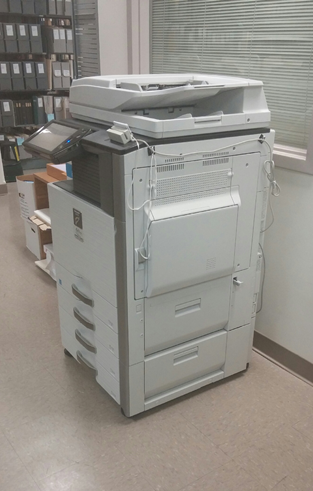

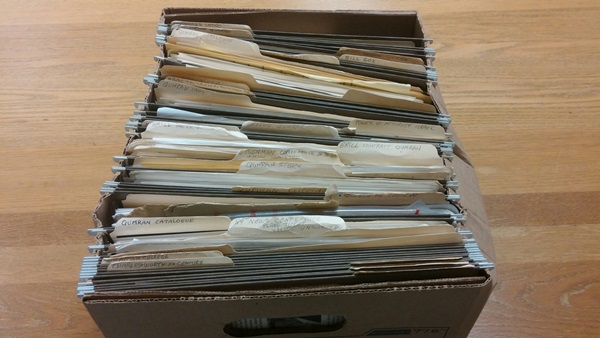
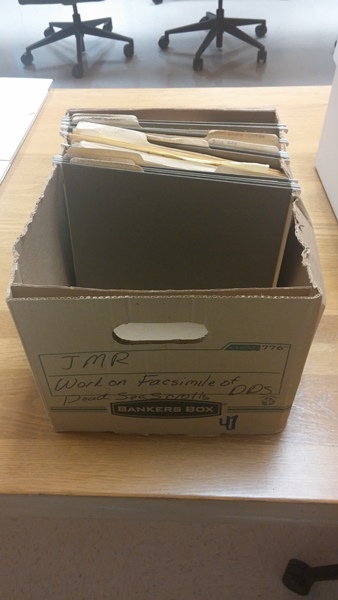

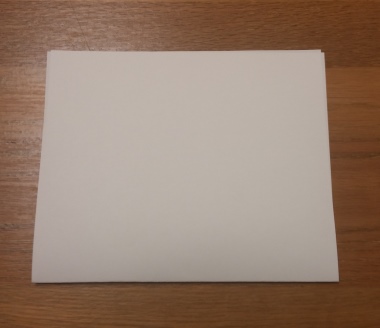

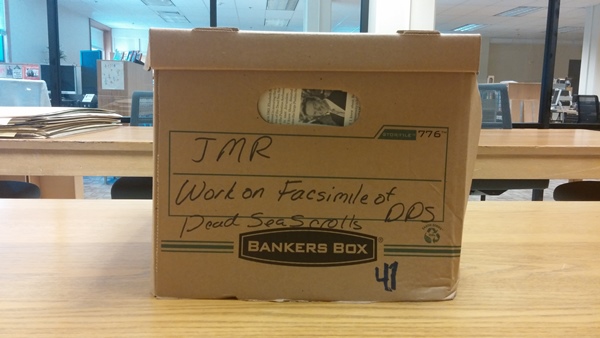 Upon receiving the box, my first task was to survey its contents. This is important, because it helps an archivist get a sense of how the series should be arranged. As can be seen from the below picture, the contents of a collection may not arrive in an order that’s conducive to helping researchers easily figure out which of the files might be useful to their project.
Upon receiving the box, my first task was to survey its contents. This is important, because it helps an archivist get a sense of how the series should be arranged. As can be seen from the below picture, the contents of a collection may not arrive in an order that’s conducive to helping researchers easily figure out which of the files might be useful to their project. I look forward to writing more next week, and will keep you all posted as to our progress in processing this amazing collection. In the meantime, please let me know if you have any questions about our work here. I’ll do my best to answer them!
I look forward to writing more next week, and will keep you all posted as to our progress in processing this amazing collection. In the meantime, please let me know if you have any questions about our work here. I’ll do my best to answer them!